Environmental Engineering Reference
In-Depth Information
n
samples
agitation
S
1
S
2
S
n
A
samples
discard or
analyze
A
B
n
n
chemical
analyses
chemical
analysis
L
L
A
L
B
L
n
a)
b)
n
samples
1 sample
S
1
S
2
S
n
A
B
n
S
1
leachate
leachate
n
chemical
analyses
1
chemical
analysis
discard or
analyze
solids
L
B
L
n
L
A
L
c)
d)
FIGURE 10.2
Schematic representations of extraction tests: a) agitated batch extraction test,
b) parallel batch test, c) sequential chemical extraction test, and d) concentration buildup test.
Single-batch extraction tests shown in Table 10.1 include standardized protocols
(e.g., TCLP,
176
SPLP,
177
ASTM 3987,
189
DIN 38 414 S4,
190
and EN 12457
175
parts
1, 2, or 4) and published tests (e.g., AV002.1
5
).
10.4.3.1.2 Parallel-Batch Extractions
Parallel-batch tests involve a series of single-batch extractions over a range of release
conditions (A, B, C, …,
n
) as shown in Figure 10.2b. The goal of parallel testing is
to represent constituent solubility and release over a range of test conditions typically
by varying a single test parameter (e.g., amount of acid in the leachant, L/S ratio,
or contact time). Leachate characteristics are usually compared among the
n
extrac-
tions as a function of the test variable. Common uses for parallel-batch extraction
tests are to determine the ANC (Acid Neutralization Capacity Test,
12
prEN 14429,
182
SR002.1
5
), constituent solubility over a range of pH values (prEN 14429
184
and
SR002.1
5
), and constituent solubility as a function of L/S ratios (EN 12457
175
part
3 and SR003.1
5
).
10.4.3.1.3 Sequential-Batch Extractions
Sequential-batch extraction tests are a family of equilibrium tests in which a single
sample is challenged in a serial manner to several different leaching conditions. The
basic procedure for sequential-batch extractions, shown in Figure 10.2c, consists of
carrying a single solid sample, typically particle-size reduced to minimize mass-
transport limitations, through a series of
n
extractions of specified test conditions.
At the end of each extraction interval, the liquid and solid phases are separated via
filtration or centrifugation and the solid phase is placed in fresh leachant for the
subsequent extraction.





Search WWH ::

Custom Search